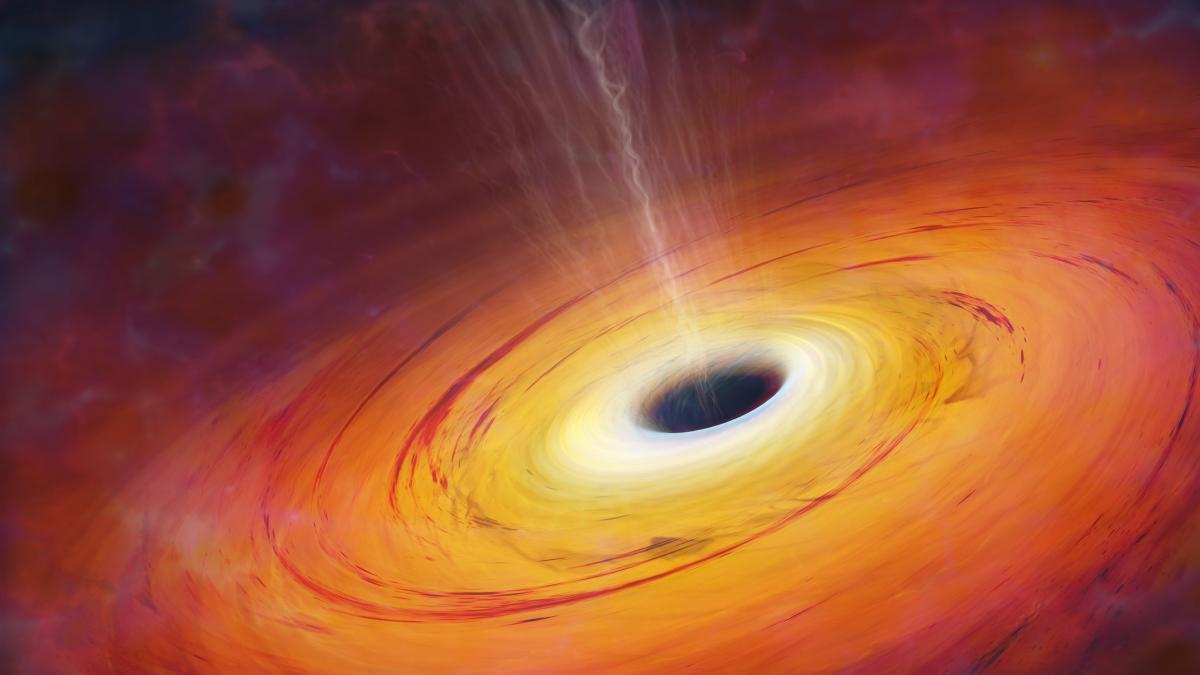They discovered a black hole that returns matter into space

The XMM-Newton X-ray telescope, the most sensitive of the European Space Agency’s (ESA) facilities, has discovered a black hole returning matter into space. It is located in a galaxy called Markarian 817.
As noted EFEall large galaxies have a supermassive black hole at the center, a place where gravity is such that it attracts gas from the surrounding environment, which, when consumed, forms a spiral or “accretion disk” that spins, heats up and ignites.
Most often, black holes consume only part of this gas and the rest is ejected into space, but there are also more dramatic cases when the entire accretion disk is ejected in all directions and with such speed that the gas disappears. surrounding star.
This behavior not only deprives the black hole of food, but also prevents the formation of new stars and changes the structure of the galaxy.
Until now, this has only been observed in extremely bright accretion disks. However, the XMM-Newton X-ray telescope discovered this type of ultra-fast “wind” in a galaxy called Markarian 817, which emitted almost no energy. Here’s what follows from a study published in a scientific journal. Astrophysical Journal.
Markarian 817’s black hole initially attracted scientists’ attention due to the small amount of light it emitted for nearly a year (the active centers of galaxies emit high-energy light, including X-rays).
“The X-ray signal was so weak that I was convinced I was doing something wrong,” said Miranda Zack, a researcher at the University of Michigan who observed the galaxy with NASA’s Swift Observatory.
“You could expect very fast winds if you turned the fan on high. In the galaxy we studied, called Markarian 817, the fan was turned on at a lower power, but it still generated incredibly energetic winds,” Zack said.
“It is very rare to observe ultra-fast winds, and even rarer to find winds with enough energy to change the character of the host galaxy. For Markarian 817 to produce these winds for about a year, although not in a particularly active state, suggests that black holes could change the shape of their host galaxies much more than previously thought,” said Elias Kammoun from the University of Roma Tre in Italy. .
The mystery of the influence of black holes and galaxies
Subsequent observations with the XMM-Newton telescope revealed what was happening: the ultrafast winds of the accretion disk were blocking X-rays sent from the black hole’s vicinity (the corona). These measurements were confirmed by observations made with NASA’s NuSTAR telescope.
A detailed analysis of the X-ray measurements showed that the center of Markarian 817 not only did not release a single “ball” of gas, but also produced a gusty storm over a wide area of the accretion disk.
The wind lasted several hundred days and consisted of at least three different components, each moving at a few percent of the speed of light.
This discovery solves an open mystery in our understanding of how black holes and their surrounding galaxies influence each other.
“Many of the remaining challenges in the study of black holes involve achieving detection through long-term, multi-hour observations to capture important events, which underscores the paramount importance of the XMM-Newton mission for the future,” said Norbert Schartel of the XMM-Newton Project.